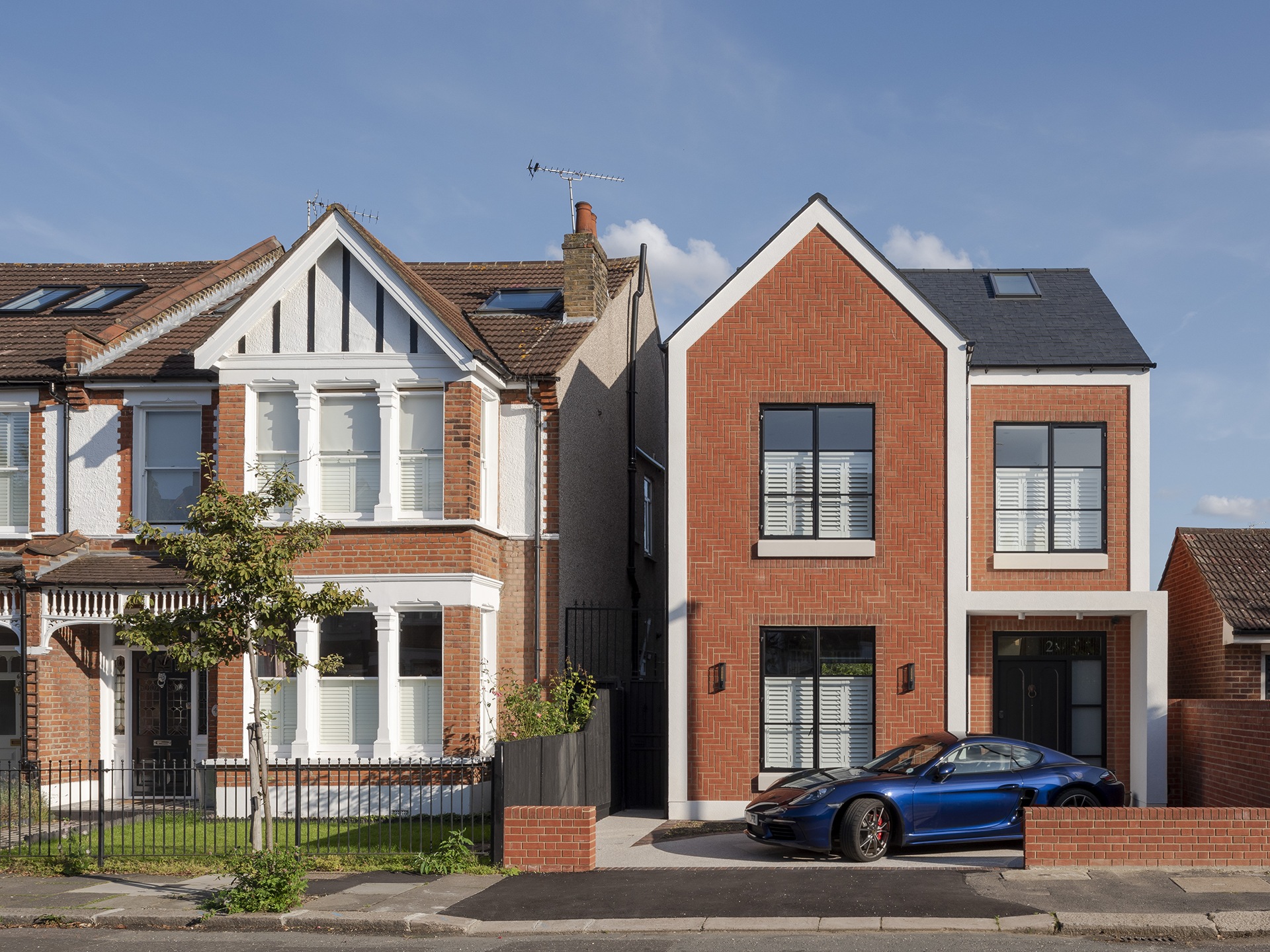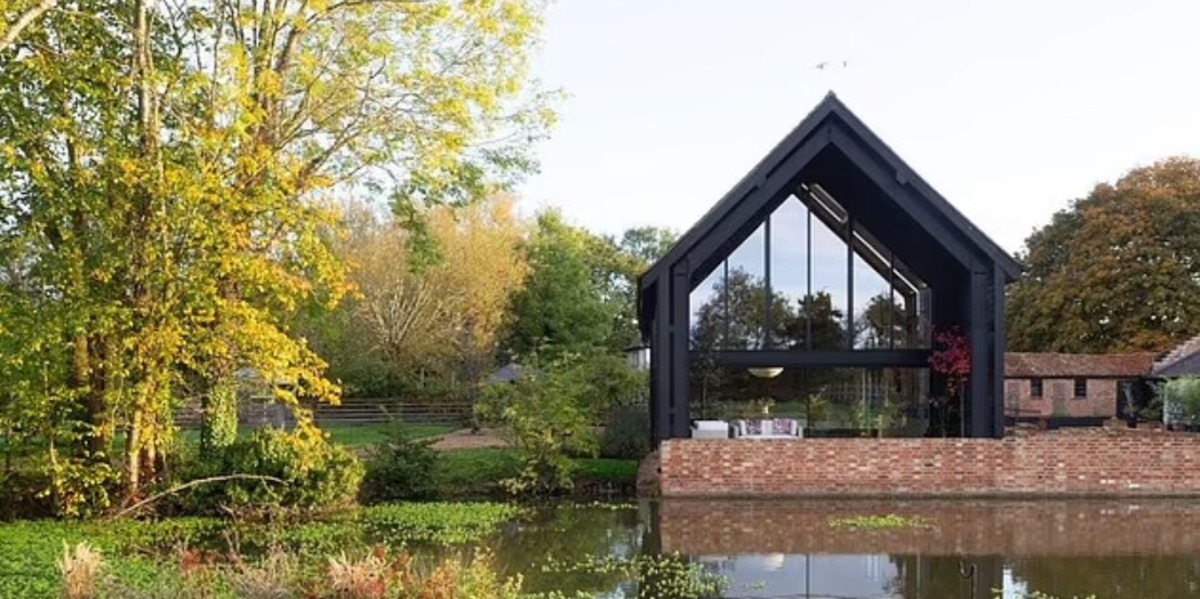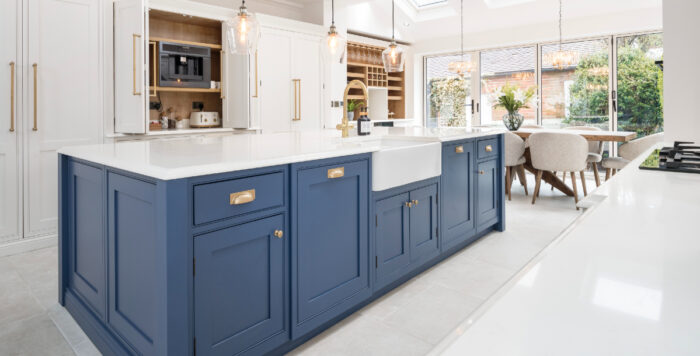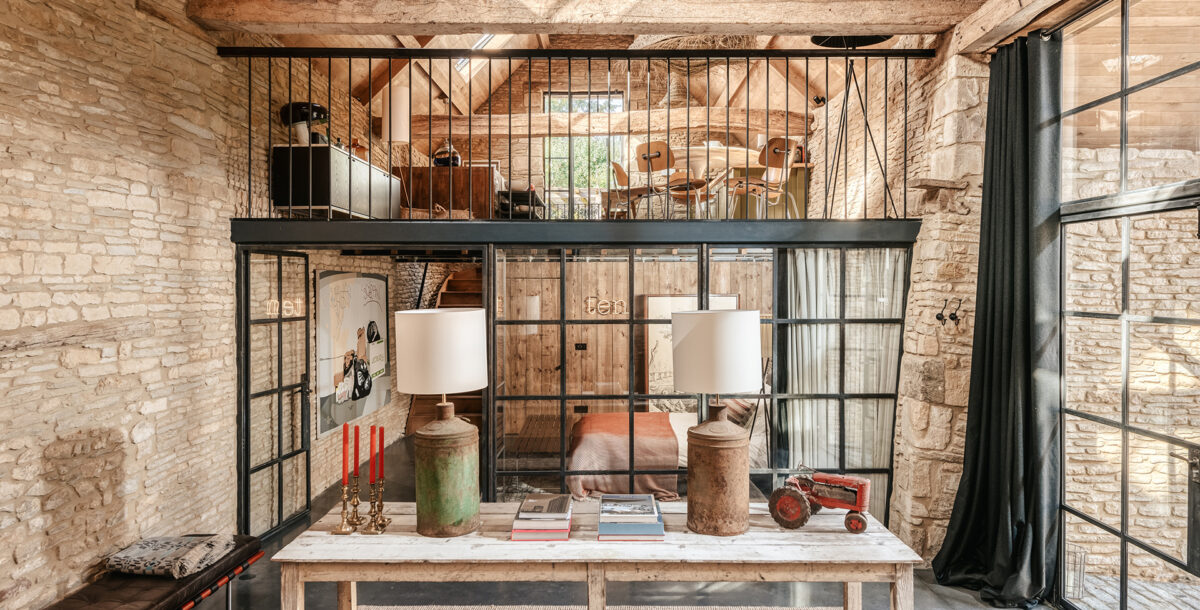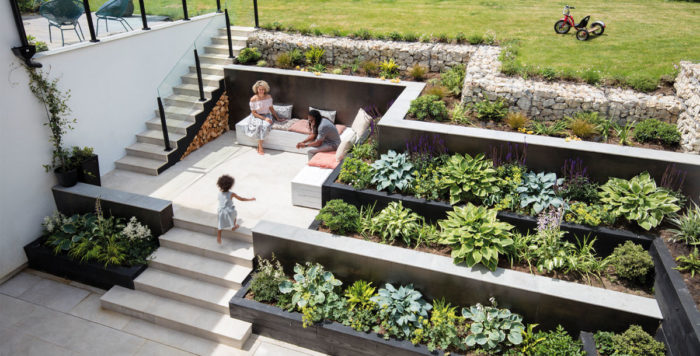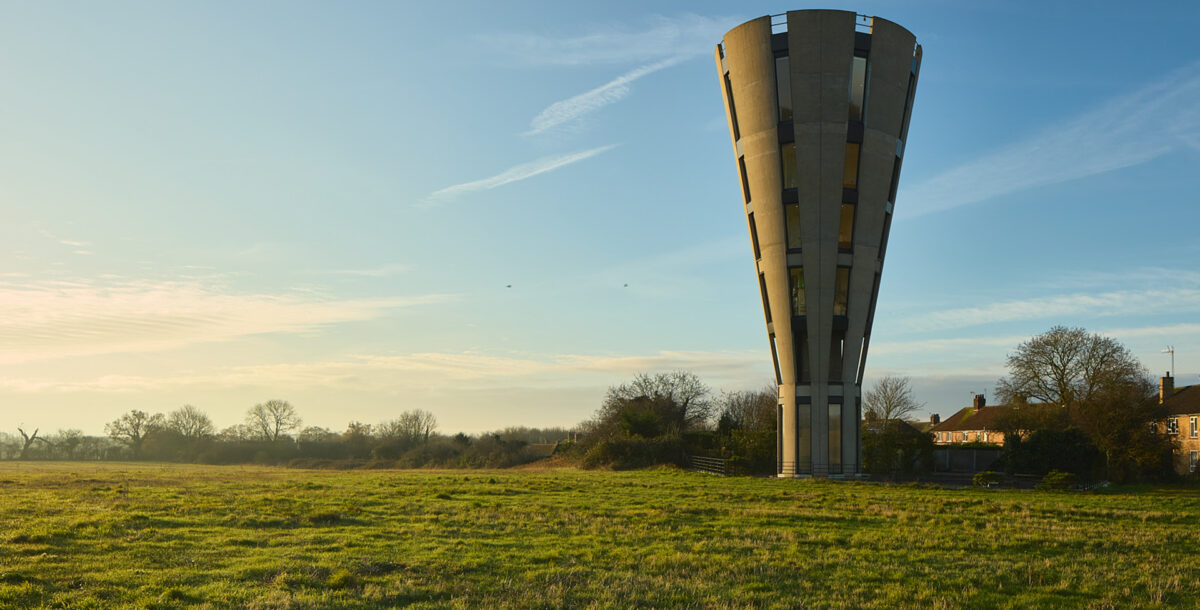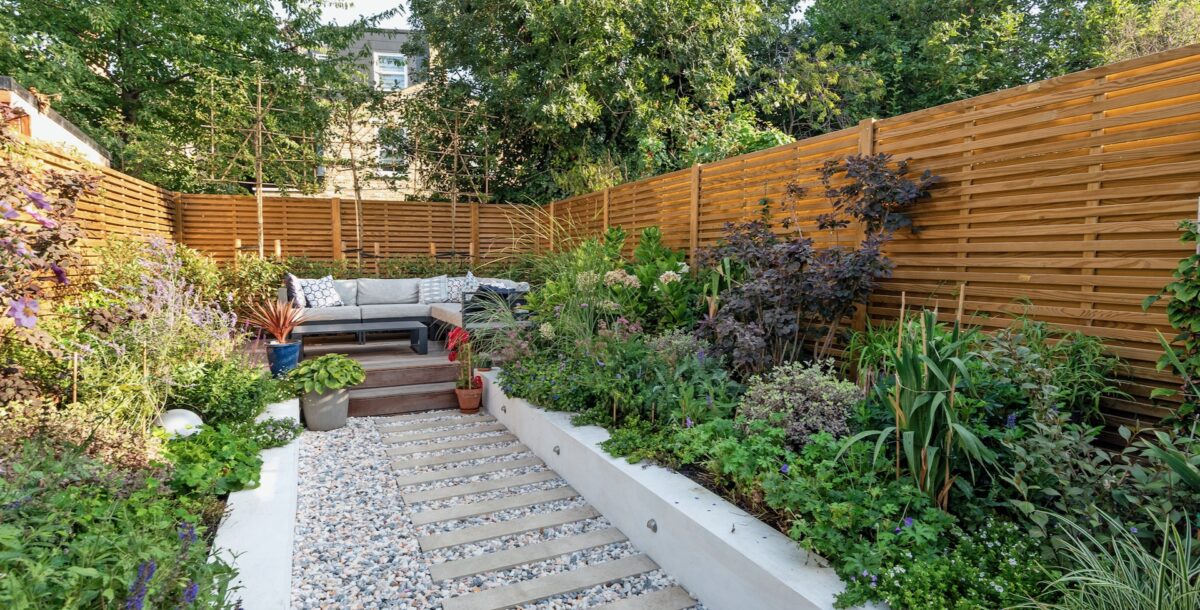A 1960s renovation in an East London conservation area
One new family home in east London is an understated exemplar of how to make contemporary design work in a period “London village” street
Rakesh and Komal have lived in the “undiscovered” London village of Wanstead, in the borough of Redbridge in east London, for 12 years. They were in a flat for several years, but, having fallen in love with the area, they had their hearts set on owning a family home in the leafy suburb. Rakesh, who works in financial services, explains, “It’s a combination of lots of things: that village vibe, the Green, two tube stations, easy to get into the City, easy to get out of London.”
Komal adds, “We have a really thriving high street and a monthly Sunday market. Good schools too. There’s a strong sense of community – plus, a lot of our family and friends are nearby.”
These qualities mean property in the area isn’t cheap. But Rakesh and Komal found a 1960s-built family house and bought it because they fell in love with the way it made them feel. Komal says, “It felt light and airy, and loved by its then owners.” The size, location, and beautiful garden seemed perfect, and the couple felt they had found their new forever home.
The house was in the Counties Estate conservation area; most likely constructed when someone sold off part of their garden for building. But the style of the property had never really fitted in with the elegant red-brick and white-render Edwardian homes on the street, with their host of period features: elaborate porches, crested ridge tiles, roof finials and generous bay windows.
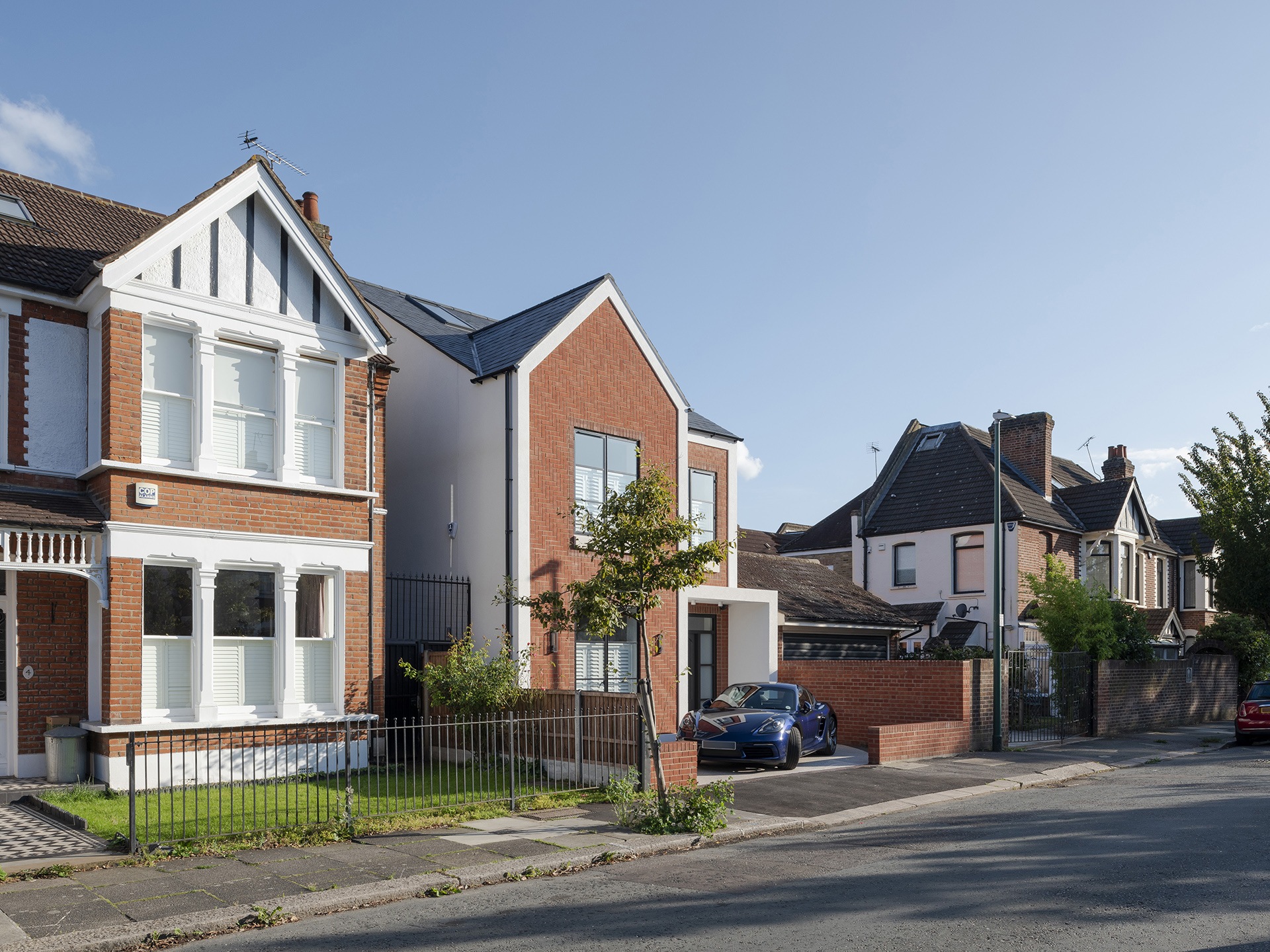
Image credit: Tarry + Perry
Architect came recommended
It quickly became clear that the house needed extensive upgrades, so the couple sought an architect to help them create their dream home. They approached Wanstead-based architects T-Space, who came highly recommended. T-Space is a medium-sized practice, founded in 2000 and working primarily in London, Hertfordshire and Essex. Their lead on the project was Architectural Designer Amr Mahir, a specialist in sustainable design. He has recently moved to live in Wales, but continues to work at the east London firm.
In the end, it was reluctantly decided that, because the old house was extremely energy inefficient and needed so much work doing, the best thing to do might be to rebuild. The design stage progressed during the pandemic with the aim of getting a contemporary design approved for the conservation-area site. Komal, who works in the creative and cultural sector, was able to bring an eye for design and strong aesthetic vision to the project. She explains that they were keen to avoid creating a pastiche of the period properties on the street, “We were cognizant of this being a new build, and trying to do it in historical fashion wouldn’t have fitted the overall style, or where we are. It’s a contemporary build and we didn’t want to shy away from that. But we also didn’t want it to look too flat or too modernist – too plain.”
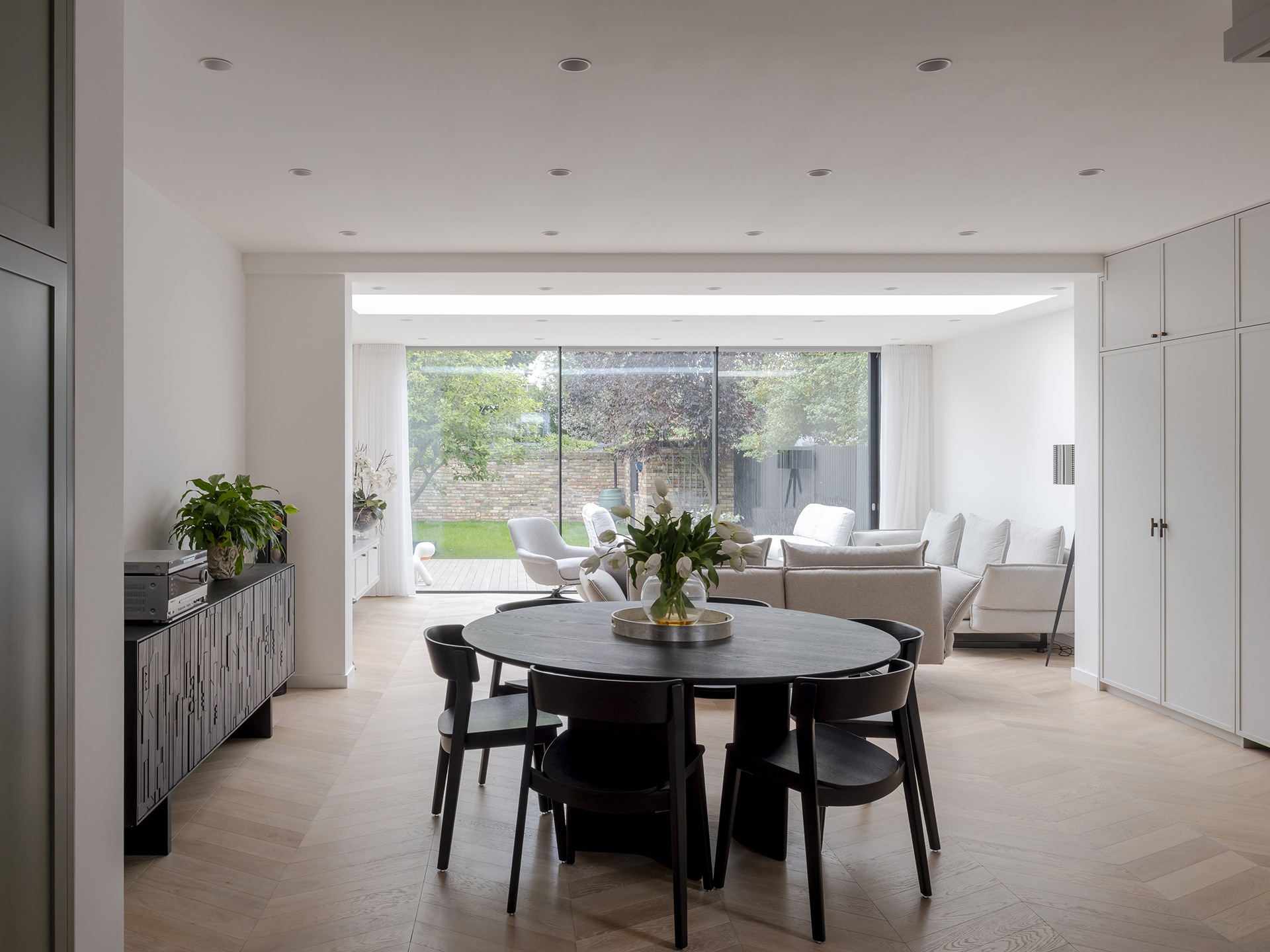
Planning approval
Amr says “The clients knew they wanted a contemporary building. So, I knew we were operating within that framework. In the beginning we went maybe too contemporary. But then we pared it back a little bit. We presented the planners with something not too dissimilar to what exists now. It was a pre-application process, and we submitted a very similar scheme, but with a second gable, rather than the single gable it has now. And in white brick rather than red.”
In fact, the single gable and red brick settled on in the end feel like real improvements to the design, helping the new house better echo the red-brick, single-gabled homes around it.
Rakesh adds, “Originally there was going to be brick-coloured aluminium cladding, but the planners felt that was too bold for the location. The Council was really receptive to what we ended up with, though. They really liked it. From what we’ve heard, they are even using it almost as a template for future builds in the area.”
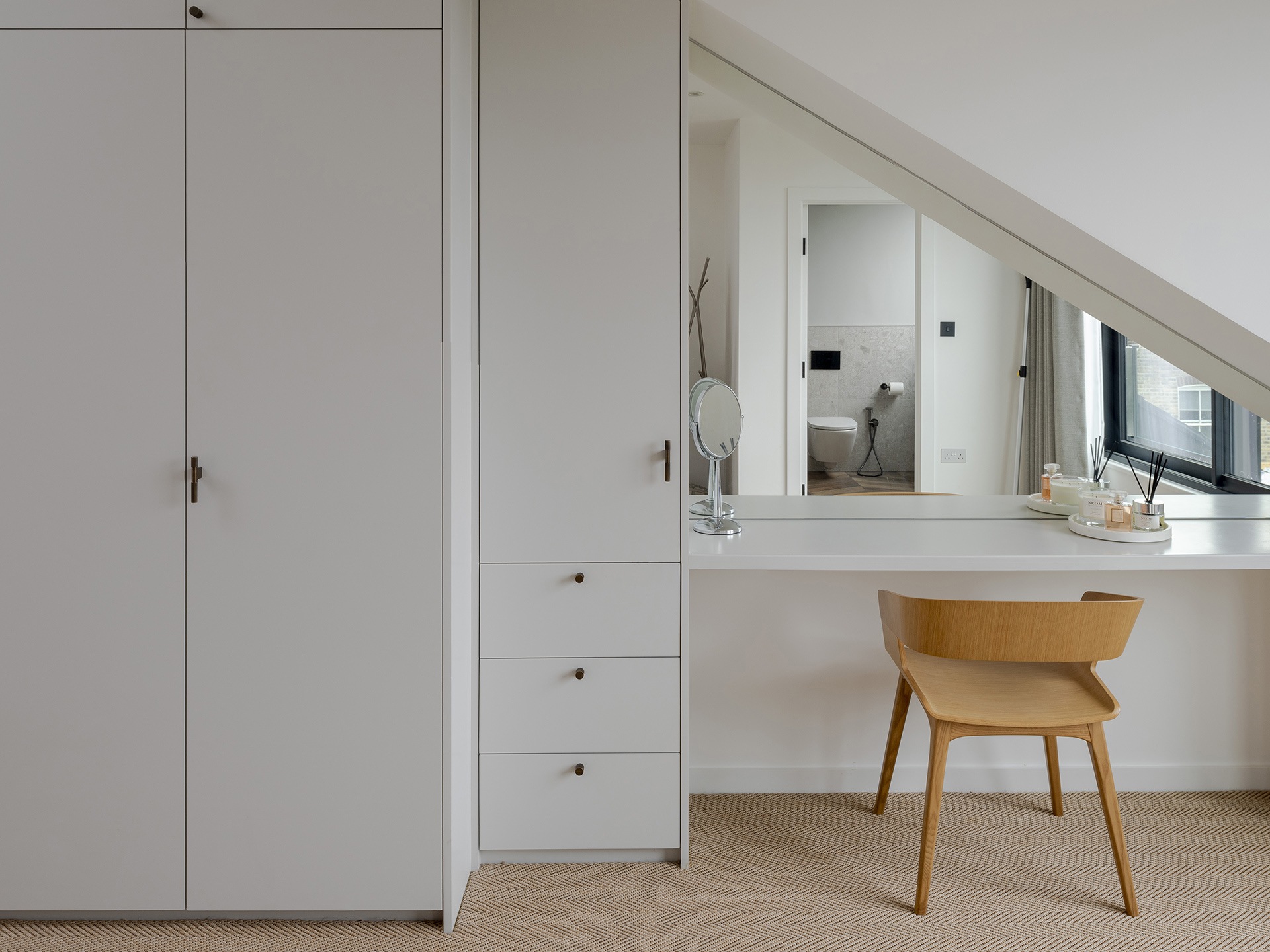
Image credit: Tarry + Perry
Lockdown research
The couple fed lots of ideas into the design. Rakesh says, “The design process was very collaborative.”
Amr agrees, “It was a very iterative process with the clients on one hand and the planners on the other. I think we found a happy medium, and we tried to facilitate that as much as possible.”
The couple made the most of lockdown to research designs, products and materials. Komal adds, “We like to keep things simple with clean lines, but to celebrate materiality too. So, although things are simple, we’ve chosen nice materials: oak chevron flooring and a really nice oak staircase, for example, to highlight the design through the material.” The bespoke, open-tread staircase, made by Excel Stairs from north London, is one of the most successful features of the finished house.
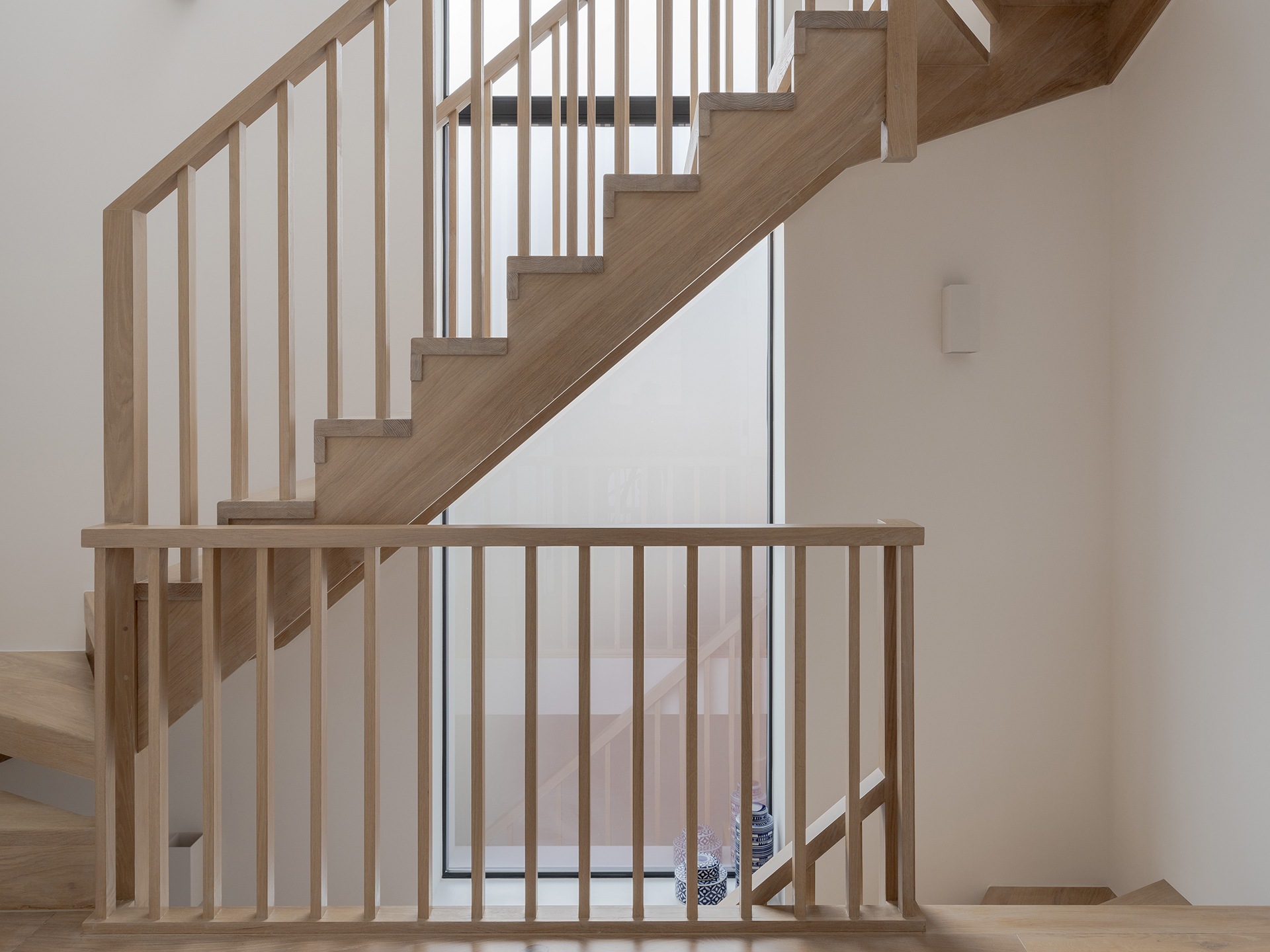
Image credit: Tarry + Perry
Herringbone brickwork
One detail not in the first designs was the herringbone brickwork on the front that is now one of the building’s most unexpected but striking and effective details. Again, it was Komal, with her eye for detail and excellent taste, who suggested the use of patterned brickwork.
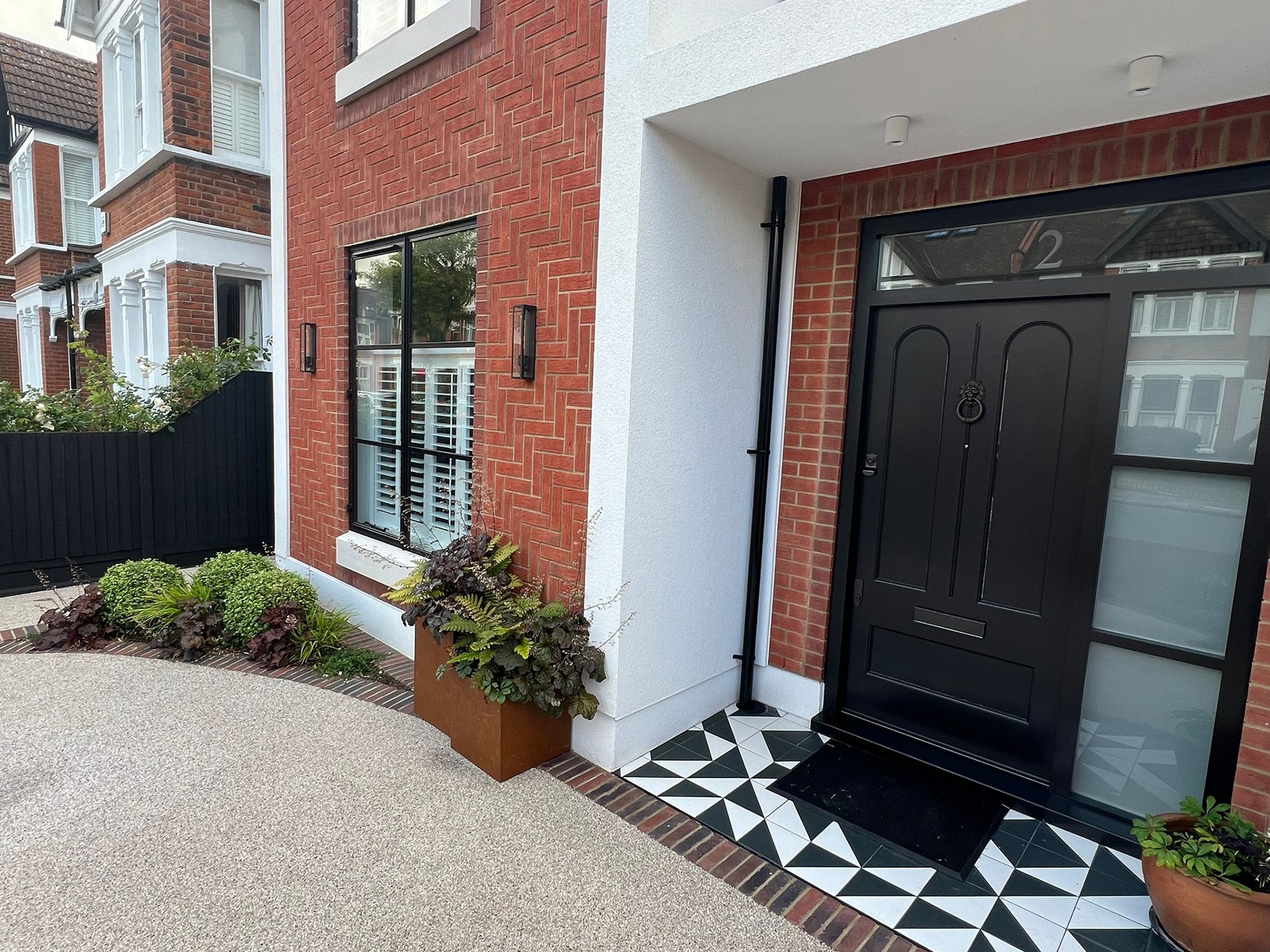
Herringbone brickwork is not common in contemporary builds. First used in Tudor and Jacobean buildings, it became fashionable again in the early 20th Century in mock Tudor and Jacobethan homes. Today the distinctive pattern is more often found in flooring. The herringbone brickwork here is horizontal rather than diagonal as it was in many older buildings.
It was a bold step to cover the main bay on the front of the home with the pattern. Amr says, “Originally, we had standard brick courses there. But it was a bit flat. Then the client had found some herringbone images online. So, we thought we might as well give it a go. Initially we were going to apply it to a small portion of the house. I tried it and we thought, ‘You know what, that doesn’t work either. Why not apply it to that whole bay and see what happens?’ Then we all looked at it and thought, ‘That elevates it a lot more, even if we can’t quite put our finger on why.’”
He continues, “What I like about it is that you don’t see it from a distance. It just looks like standard brickwork. And it’s a nice little surprise when you get closer to it, and you think, ‘Well, that’s not what I was expecting.’”
Airy and open
Amr continues, “The other thing I like about the house is the fact it’s a very relaxing space. I think that is owed in large part to the clients’ appreciation of practices like yoga and Feng Shui, and things like that. That feeling you get when you first walk through the front door and the space just opens up: that’s pretty cool.”
Rakesh concurs. When asked to describe the experience of living in the space he says, “It’s peaceful. It’s such a nice space, open and bright.”
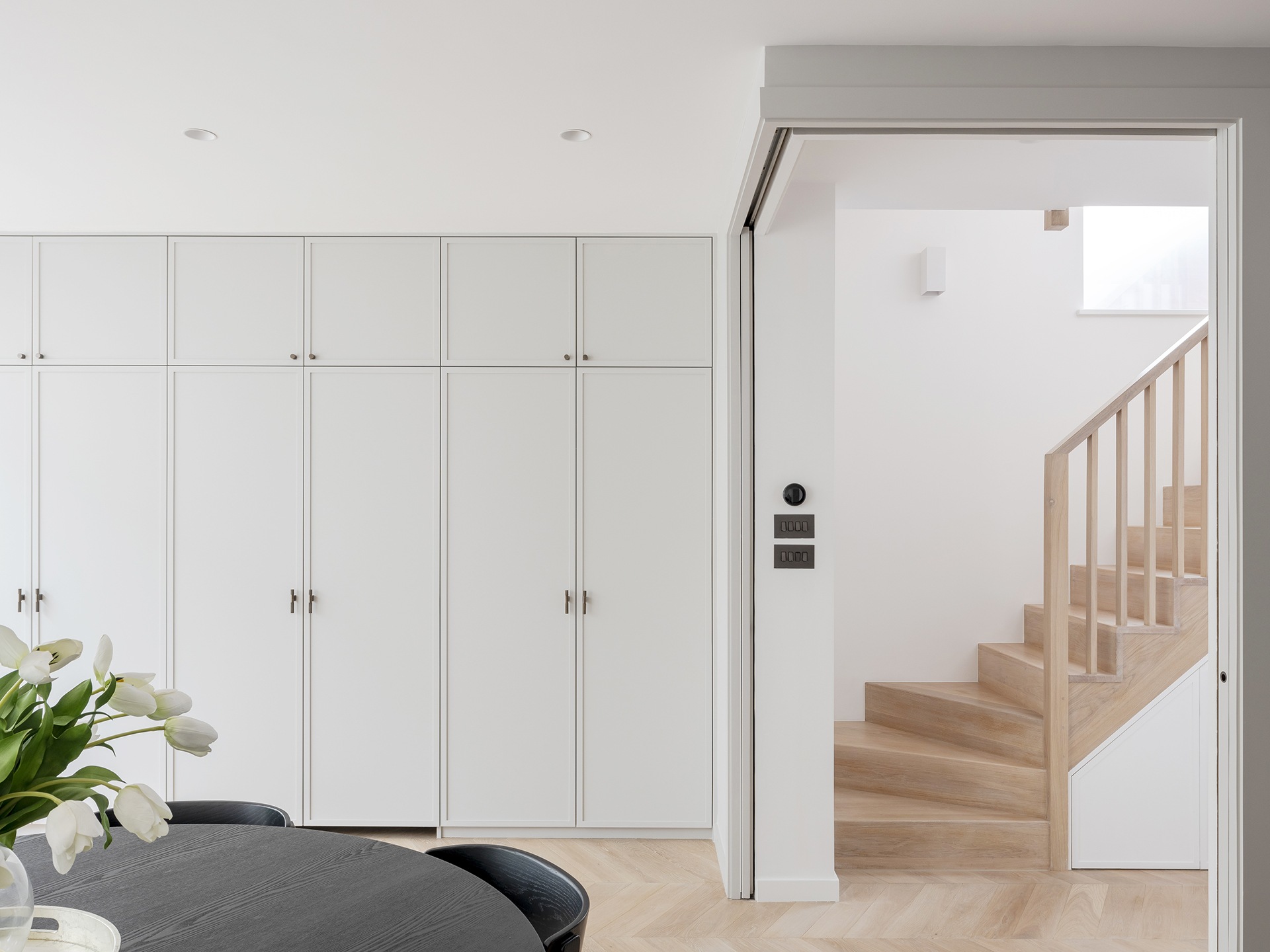
Image credit: Tarry + Perry
Tried and tested partnership
When it came to the build, things went incredibly smoothly. Rakesh says, “The architect and the builder have worked together before. And are both known to be reputable entities locally. So, it just felt like a good mix.”
Summit Group is an east London-based building company run since 2011 by friends Julian and Vadym. Laura Nicholls from the firm explains how they deliver the service that has earned them such a good reputation. She says, “We’re always looking to take on new challenges – we’re not afraid to try new things. Every project is managed personally by Julian or Vadym and we only take on a limited number of jobs at any one time. Also, we use all our own tradespeople rather than subcontractors.
“We aren’t afraid to contribute ideas to projects too. Especially ones that will save our clients money. For Rakesh and Komal, Julian designed some special corner pocket doors for the kitchen.”
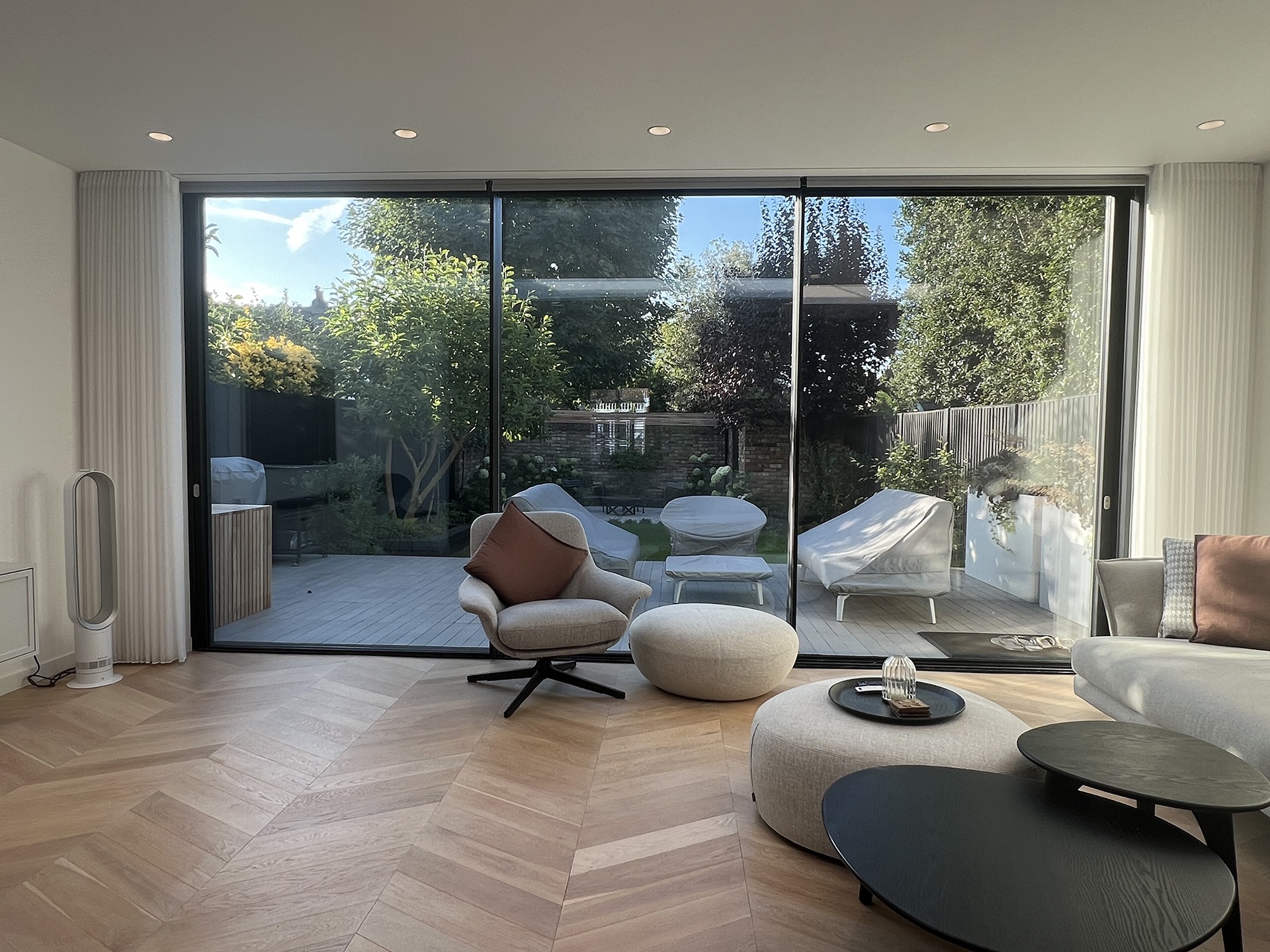
Smooth self-build
It’s almost unheard of for a self-build project to run so smoothly. Amr says, “At the end, Rakesh and Komal said, ‘Oh, we could do that again.’ And I’ve never heard anyone say that on a self-build.” He agrees that a big factor in the smooth running of the project was choosing the right contractor. “We’ve known Summit for years, so we know how good they are. They’re very good at attention to detail and attention to quality as well. Plus, they’re very adaptable. So, if changes have to be accomplished on site, they’re very good at doing that, and very good at communicating that to us. They’re also used to the way we work. It’s a partnership that is tried and tested: we’ve worked with them, they’ve worked with us. They know what our drawing packages are. They know how to read our drawings. And they know us personally as well. The communication works.”
Rakesh puts the lack of hitches down to “a combination of great architect and great builder”. He adds. “I’d like to think that Komal and I are quite good, too. We made decisions quite early on. And I think we were very organised and very clear on what we wanted, so there weren’t late decisions. Also, because we lived literally around the corner, we could keep a track on what was going on. It allowed us to intervene if we thought, ‘Oh that doesn’t look right,’ rather than turning up three weeks later and realizing they’d built something in the wrong place or something.” The most challenging part of the project, he reckons, was keeping on top of building regs.
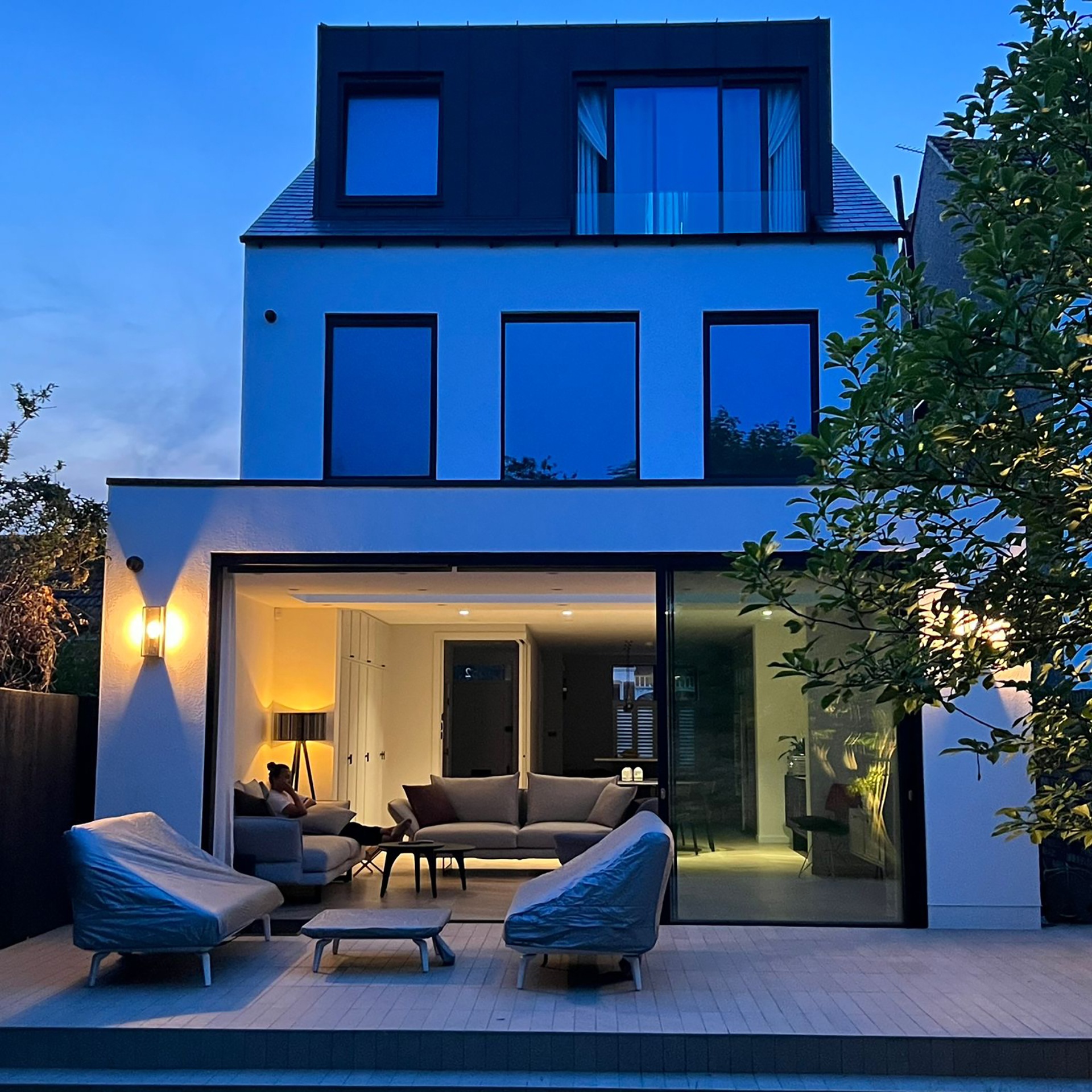
Good communication
Good communication was the key to it all. They held weekly on-site meetings and had a WhatsApp group. Rakesh continues, “There was lots of communication between the parties. I would describe it as a kind of co-project management.
“Summit had a team, and one member was day-to-day managing the job. But we were supporting that because there were times when we would need to say when the bathroom was going to turn up, for example, or when the windows were going to come. The architect said, because we were working with Summit, they didn’t feel like we would need a project manager because they are so well organised.”
The finished interior is an eminently liveable, minimalist modern home. The exterior is a quiet triumph. The white render on the front elevation creates the simple outline of a house shape: almost a signifier for “home”. The proportions, colour and materials of the house reflect those of the existing handsome family homes on the street, but rearranged in a stylish, contemporary way. The detailing of the black steel window frames, cast-stone window sills, and herringbone brickwork provide enough visual interest to keep the eyes happy.
The home contains an open-plan kitchen, living and dining room and four bedrooms, two of which are used as a home office and a yoga/fitness room.
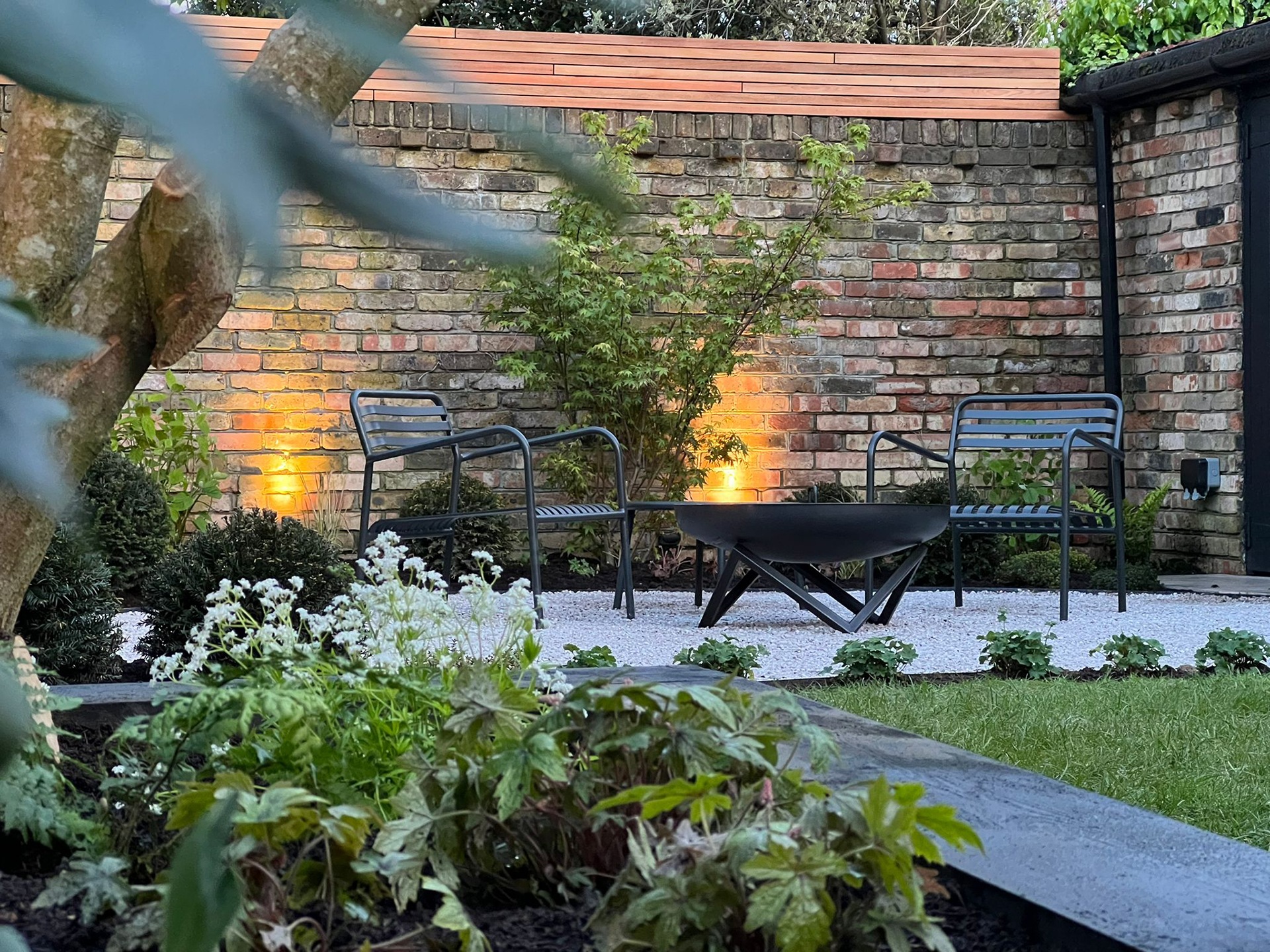
Collaborative approach
The iterative, collaborative approach to the design and building of this project has paid dividends. Its success is a testament to several things: a long-term relationship of trust between top-notch designer and contractor; a collaborative, respectful relationship between designer and client. And the quiet good taste of one quietly spoken woman. So often when a Grand Design goes wrong, it’s the result of one person pushing through their plan in a macho manner, heedless of advice or professional counsel. The smooth running of this project – and its excellent end product – is the result of a very different way of working. Amr says, “This project wouldn’t have been what it is without Komal’s input and her ideas. She came to us with a lot of ideas, and she knew what she liked what she didn’t like. Her philosophy early on was to see a wide variety of options and design strategies and choose from those, rather than just picking one idea, thinking ‘that’s good enough’, and just running with that.
“She wasn’t afraid to say, ‘I’ve seen something that I really want to explore.’ And we were happy to say, ‘That’s fine, we’ll explore it.’ She had a very good eye. Not just for design, but also for the balance of things. If you look at the house internally, a lot of that comes from Komal’s appreciation for harmony and balance and simplicity – those sorts of things – and how the building makes her feel.”
You can see more about the project on T-Space’s website here. And in the video below.

